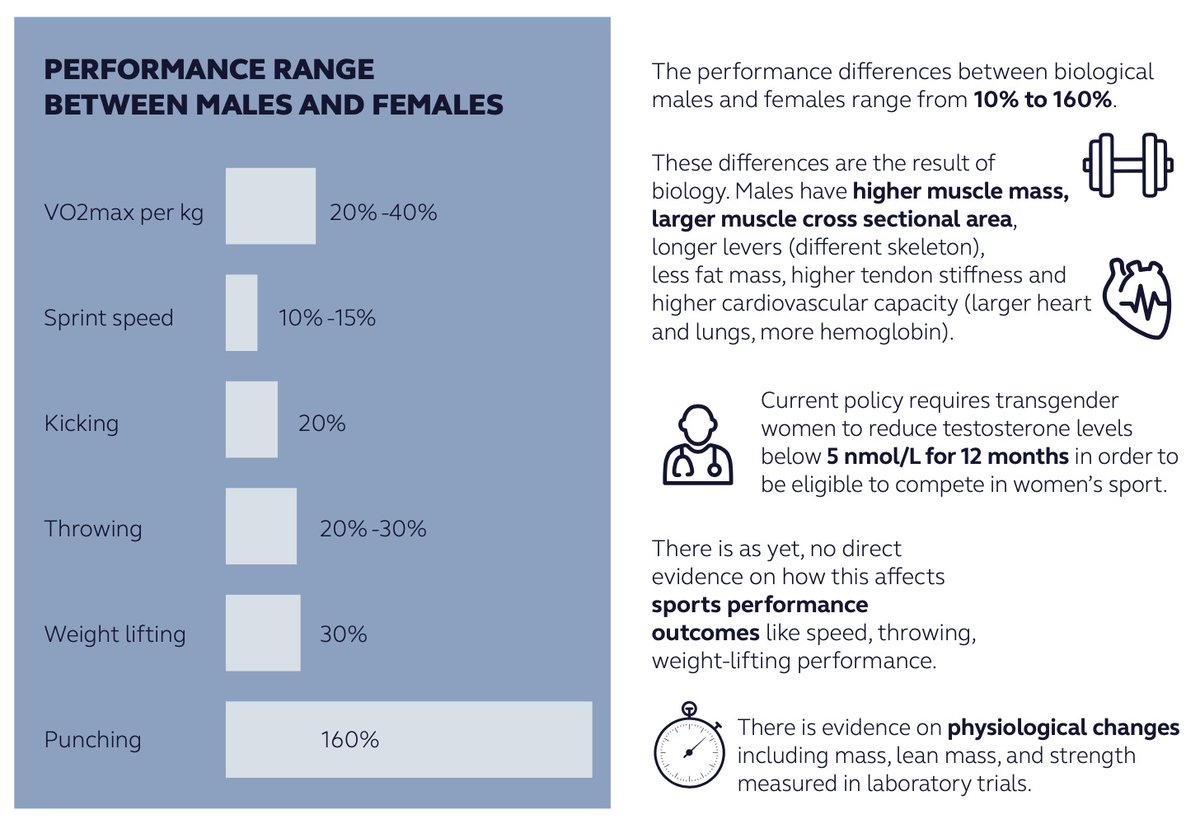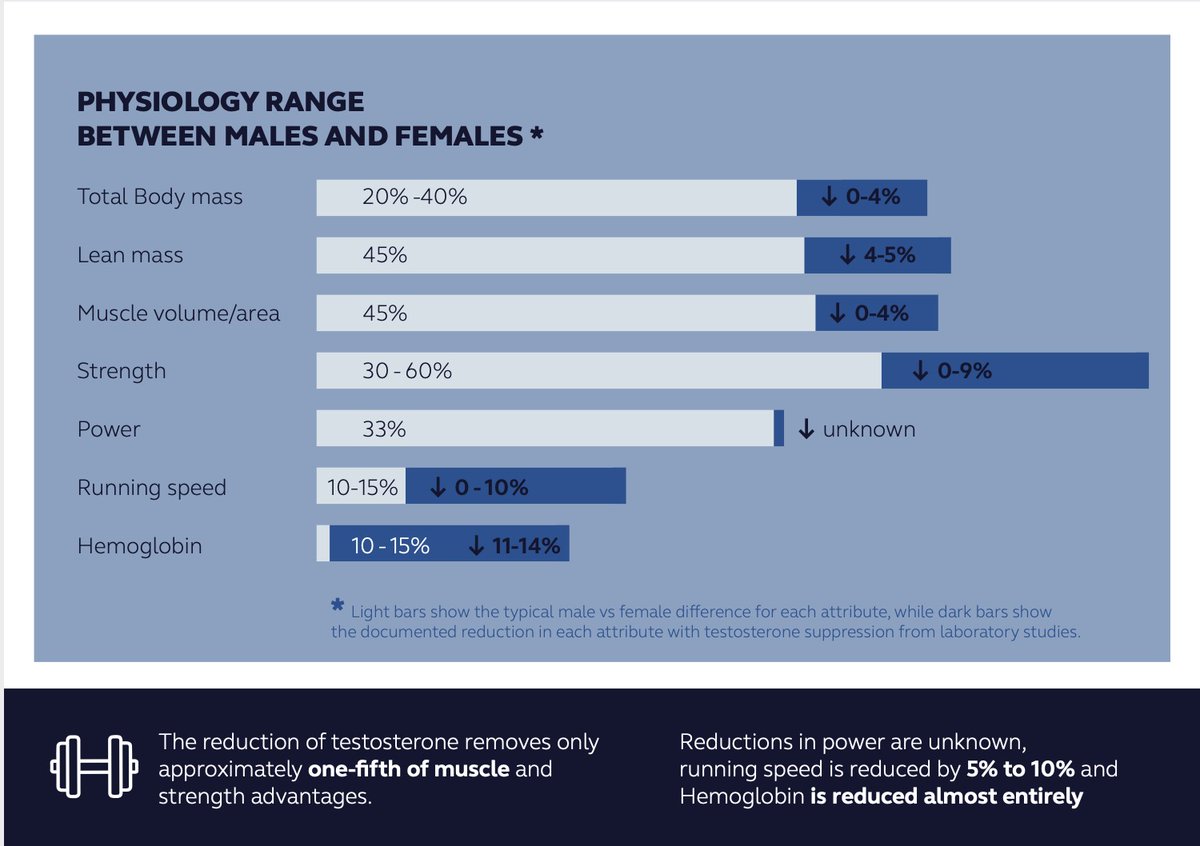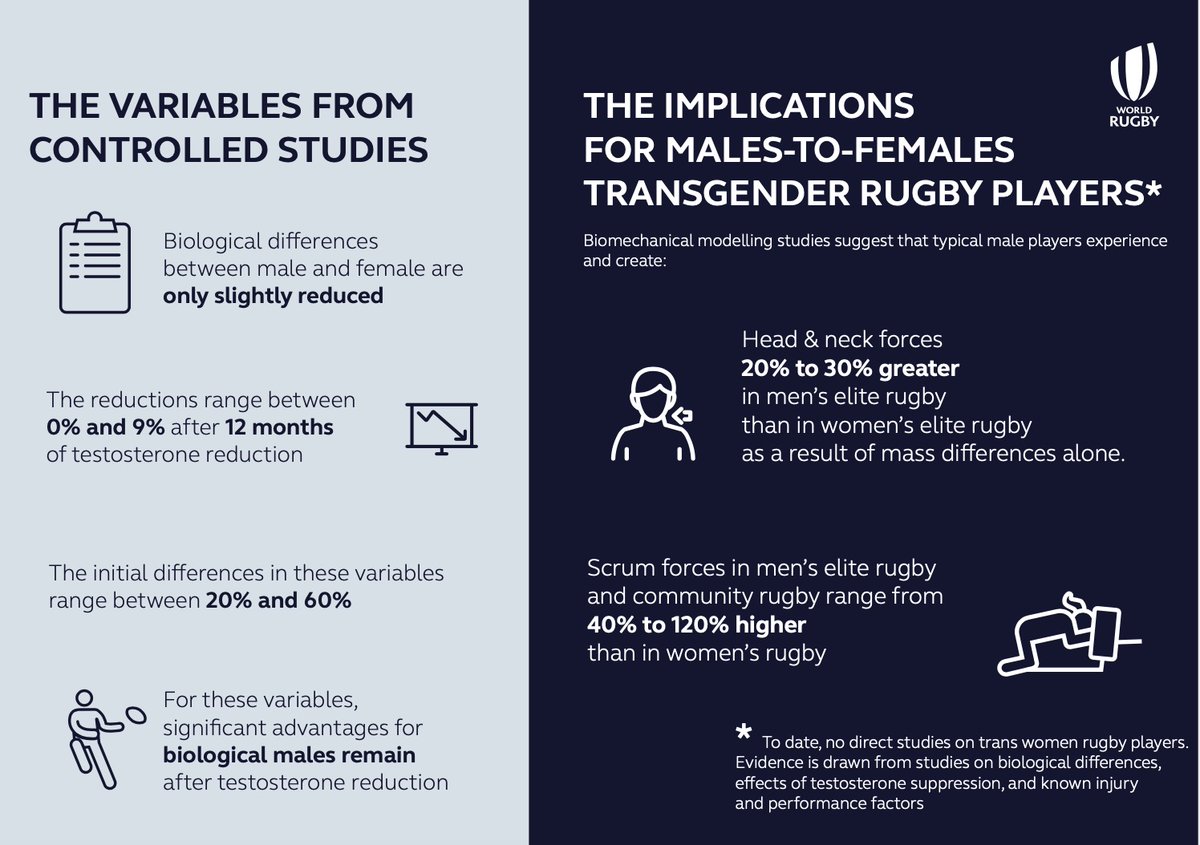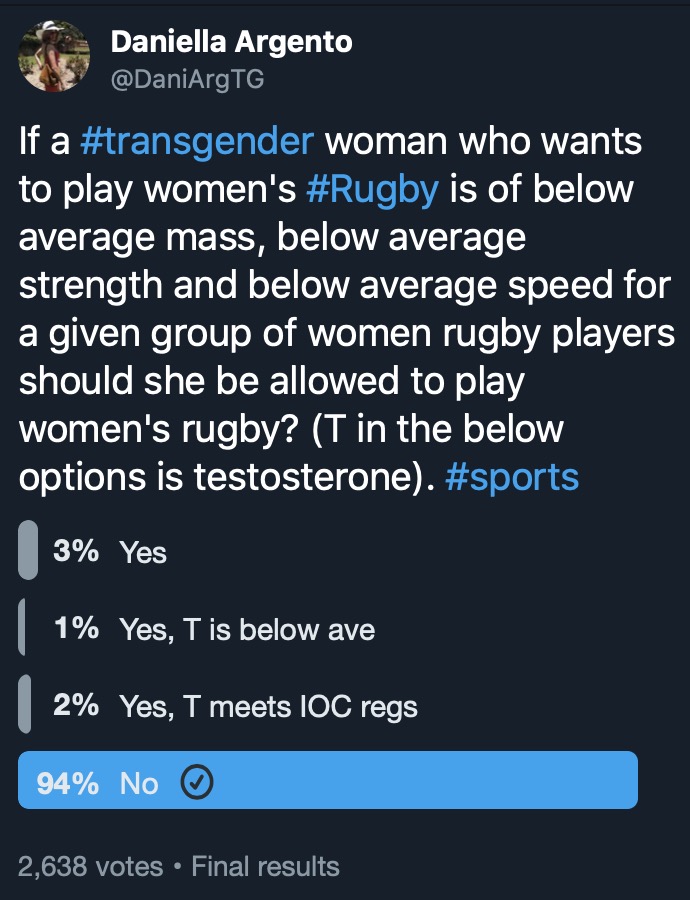
This is a sound and accurate logical explanation of why this notion of “matching for performance” to sidestep male and female sports categories is flawed. There are so many problems with it, one being that it fundamentally undermined the meaning of sporting competitions. (1/)
https://twitter.com/fondofbeetles/status/1319961463478538241
Another way to frame or conceptualise this is to recognize that if a female and male athlete are “matched” by this “unicorn-algorithm matching strategy”, the female athlete will be relatively better in their original category than the male athlete in theirs. Fundamentally unequal
A woman would be in say the 95th percentile for metrics like strength, speed, power etc, vs a men with equal numbers who is at around the 50th to 60th percentile for men. This “competition” enables relatively mediocre males to compete “equally” against excellent, top 5% females
Not to mention that once you test these metrics in your “unicorn matching strategy”, you’ve now either created a disincentive for people to train to get stronger, faster, more powerful, or you’ve basically tied yourself into rescreening every time there’s a competition.
Imagine being in the top 1% of your category, with no way to get better legally since you’re constrained by biology, & then having to compete in a lower division against men who aren’t even in the top 25% of their class, without knowing if their tests are valid. It’s so stupid
Imagine the Olympic Games 100m final for “Tier D” athletes. Fraser-Pryce, the fastest woman in 40 years, pipped on the line by Doug Leadfoot, club runner proudly representing The Cape Crusader Sprint Club. Time 10.68s. Plus, the Olympics would be 2 months long, nobody would watch
The most ludicrous thing is that some people who argue for this (& case by case assessment & entry, too), also act like they’re interested in equality for women. How does equality look when the best female athletes in the world are racing males in the 4th (or lower) category?
• • •
Missing some Tweet in this thread? You can try to
force a refresh






